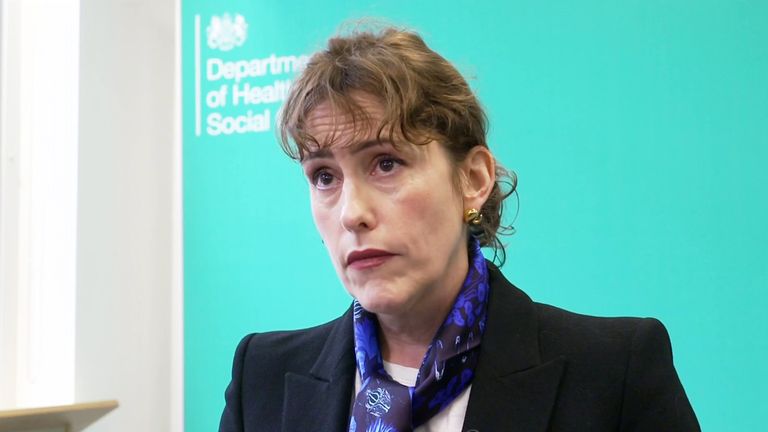NHS: What do the latest figures show about treatment waiting lists, hospital beds, and ambulance wait times? | UK News
NHS England’s waiting list for elective treatment fell from 7.7m in October to 7.6m in November.
That’s the smallest it’s been since June, but still far larger than it was in November 2022 (7.2m).
Despite facing the most sustained industrial action in its history, the NHS has had a relatively good winter.
A mild flu season has helped keep demand for the health service relatively low, at least partially offsetting the impact of the strikes.
As of 7 January, just 2,271 beds were rendered unavailable due to seasonal winter illnesses.
That’s less than half the figure at this time last year (5,151).
As a result, hospitals have been unusually empty for this time of year, with 91.9% of beds occupied (compared to 93.8% at the same time last year).
With more capacity, hospitals have had more space to take on elective cases and cut waiting lists.
It has also reduced some of the pressures on A&E departments. Waiting times have fallen, though they still remain well above their pre-pandemic levels.
In December, 104,000 people waited more than four hours to be admitted to A&E after the decision had been made to admit them, or 27% of all admissions.
That’s down from a record 33% of admissions in 2022, but far higher than it was in 2018 (11%).
One in every 12 admissions this December (8%, or 44,000 people) were forced to wait over 12 hours. Such waits were almost unheard of before the pandemic, affecting just 284 patients in December 2018.
Similarly, ambulance response times are better than last year, but remain above target.
The average call-out for a heart attack or stroke took 46 minutes to arrive, down from 48 minutes in December 2022 but six minutes above target.
For 10% of calls, ambulances took an hour and 41 minutes.
Sarah Woolnough, chief executive of the health charity, the King’s Fund, said the figures showed the NHS was still not meeting the majority of its most important performance targets this winter.
“On some measures, the situation is better than this time last year, in part thanks to efforts to increase capacity as well as relatively low hospital admissions from COVID-19 and flu, but patients are still not receiving an acceptable level of service,” she said.
“Behind each of these figures is a person who is struggling to receive the timely care they need and deserve, despite the best efforts of staff.”
Read more from Sky News:
How NHS is ‘standing still’ to meet existing demand
Local NHS bodies on track to spend £4.9bn more than planned
Kate Seymour, head of advocacy at Macmillan Cancer Support, said that while the data showed a slight improvement on wait times, there were “still thousands of people in England facing agonising delays for vital cancer diagnosis and treatment”.
“Every day at Macmillan we hear how these unacceptable delays can cause needless anxiety and even result in a worse prognosis. People’s lives are being put at risk, and it’s simply not good enough,” she said.
Health and Social Care Secretary Victoria Atkins said the figures showed the progress “our fantastic NHS staff can make towards bringing waiting lists down when they don’t have to contend with industrial action”.
“November was the first month without industrial action for over a year, and we reduced the total waiting list by more than 95,000 – the biggest decrease since December 2010, outside of the pandemic,” she said.
“We want to put an end to damaging strikes once and for all, and if the BMA Junior Doctors Committee can demonstrate they have reasonable expectations, I will still sit down with them.”
